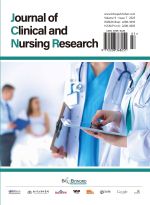Abstract
Objective: To explore the rehabilitation effect of upper limb rehabilitation robots combined with isokinetic muscle strength training on hemiplegic patients in the recovery phase of stroke, and to provide a more effective intervention plan for clinical rehabilitation treatment. Methods: One hundred and sixty type 2 stroke patients with hemiplegia in recovery phase treated at Jintan First People’s Hospital from May 2024 to May 2025 were selected as the research subjects. They were divided into a control group (n=80) and an observation group (n=80) using a random number table method. The control group received isokinetic muscle strength training, while the observation group received additional upper limb rehabilitation robot-assisted intervention based on the control group’s treatment. The general information (age, gender, course of disease), Brunnstrum staging, Barthel index, FMA score, and facial expression pain score were compared between the two groups. Results: After treatment, the indicators of both groups improved compared to before treatment. The observation group showed significant advantages in improving various indicators. In terms of Brunnstrum staging, the number of patients in stage IV and above was significantly higher than that in the control group; in terms of the Barthel index, the increase was more significant than that of the control group (P = 0.000 < 0.001). In terms of the FMA score, the increase was more pronounced (P = 0.000 < 0.001); and in terms of facial expression pain assessment, the decrease was more evident (P = 0.000 < 0.01). Conclusion: The combination of upper limb rehabilitation robots and isokinetic muscle strength training can significantly improve the recovery of limb function and activities of daily living in hemiplegic patients during the recovery phase of stroke, and reduce pain. Compared with simple isokinetic muscle strength training, the rehabilitation effect is better, and it is worthy of clinical application.
References
Zhang Y, He J, 2023, Multi-Center Screening Analysis of Stroke. Chinese Journal of Clinical Healthcare, 26(02): 171–175.
Fan L, Ji W, 2021, Clinical Study on Acupuncture Combined With Isokinetic Muscle Training in the Treatment of Hemiplegia During Recovery From Stroke. Journal of Integrated Traditional Chinese and Western Medicine in Cardio-Cerebrovascular Disease, 19(16): 2826–2829.
Ye Q, Li B, Zhou J, et al., 2020, Analysis of the Rehabilitation Effect of Isokinetic Muscle Training Combined With Virtual Reality Technology and Occupational Therapy on Hemiplegic Patients During Stroke Recovery. Chinese Journal of the Frontiers of Medical Science (Electronic Version), 12(12): 90–94.
Liu X, Zhu R, Dou Z, et al., 2023, Application Effect of Long-Term Needle Retention at Scalp Point Cluster Combined With Upper Limb Rehabilitation Robot in Elderly Stroke Patients During Recovery. Chinese Journal of Gerontology, 43(17): 4181–4183.
Zhang C, Li Y, Ning M, et al., 2024, The Influence of Intervention Time of Isokinetic Muscle Training on Hemiplegic Patients During Stroke Recovery. Huaxia Medical Journal, 37(01): 160–164.
Yang L, Zhou X, Xu J, et al., 2024, Effects of Isokinetic Muscle Training Combined With Upper Limb Rehabilitation Robot on Upper Limb Function Recovery, Quality of Life, and Neural Plasticity in Hemiplegic Patients During Stroke Recovery. Journal of Robot Surgery (Chinese and English), 5(06): 1111–1115.
Wu N, 2020, Effects of Early Isokinetic Muscle Training on Muscle Strength and Balance Function in Stroke Patients With Hemiplegia. Journal of Practical Medicine, 37(11): 1001–1003.
Liang Q, Li Y, Feng J, 2022, Rehabilitation Effect of Upper Limb Robot-Assisted Training on Upper Limb Function in Stroke Patients During Recovery. Modern Chinese Doctor, 60(17): 118–120+135.
Li Y, Huang G, Lu P, et al., 2022, Effects of Upper Limb Rehabilitation Robot Combined With Upper Limb Rehabilitation Training on Hemiplegic Patients During Stroke Recovery. Journal of Rehabilitation, 32(02): 111–116.
Gu T, Li C, Zhan Q, 2017, Research Progress on the Application of Upper Limb Rehabilitation Robots After Stroke. Journal of Neurology and Neurorehabilitation, 13(01): 44–50.
